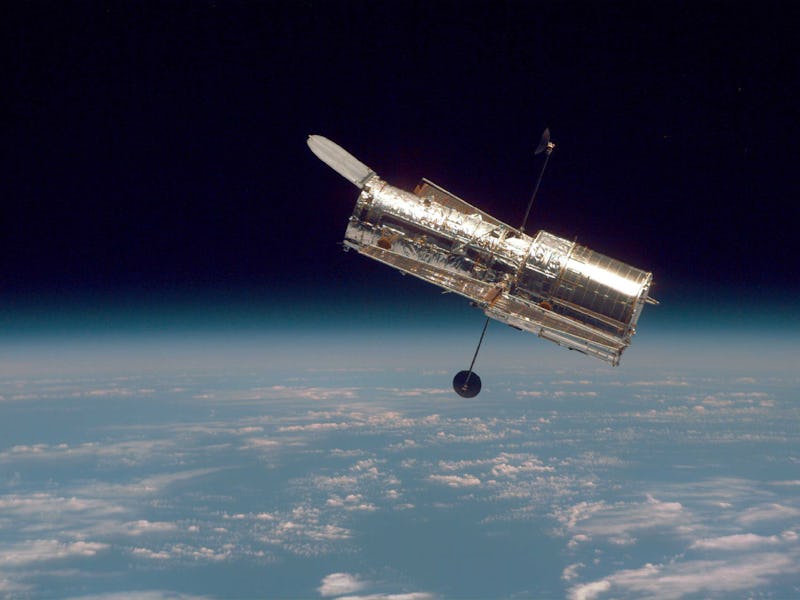Hubble Turns 26, and the End Is Near
A look into what's next for NASA space telescopes.

April 24, 2016 marks the Hubble Space Telescope’s 26th year in orbit. During its time in space, Hubble has measured the farthest galaxy ever observed, photographed intergalactic collisions, and spotted “monster stars.” We don’t understand everything that Hubble photographs, but it has put together an unparalleled collection of greatest hits since 1990 that continue to make the space community swoon.
Every year on its birthday, Hubble “spends a modest portion of its observing time capturing a spectacular view of a specially chosen astronomical object,” the Hubble website states. This year’s birthday image is a bright blue “Bubble Nebula” called NGC 7635 in the constellation Cassiopeia 8,000 light years away. In addition to being an out and out dreamy image, the photo is helping astronomers understand the complex geometry and dynamics of space nebula.
It’s as gorgeous and awe inspiring as so many other Hubble images. It’s also a member of a dying breed of Hubble photography that will soon be replaced.
Hubble’s replacement — the James Webb Space Telescope — is scheduled for launch in October of 2018. It will be the most advanced and powerful space telescope ever built when it steals Hubble’s job and the public’s heart. Webb will deliver even larger images at even higher resolutions.
Webb hasn’t come without its own set of problems though. Plans for the new space telescope started when Hubble was just six years into orbit in 1996. Funding for the project followed the wax and wane of Congress’s interest in space over the years. Finally, in 2013, Congress approved an $8.8 billion budget and things started to move more smoothly. By all estimations, NASA will hit that 2018 launch date.
Artist rendering of the James Webb space telescope.
There’s obviously been a massive leap in technology between 1990 and today. When Hubble launched, landlines were still dominant and the now nostalgic dial-up sound signaled cutting-edge technology. Today there are smartphones and wifi. Now imagine that leap in technology on a NASA scale.
NASA predicts that Webb will be the “premier observatory of the next decade,” helping astronomers learn about things like the Big Bang and how life-sustaining solar systems are made. If Hubble’s longevity is any indication, Webb’s influence is likely to last longer than a decade.
Until then, however, Hubble will continue to prove that it’s no scrub. Here are Hubble’s last three birthday shots.
'Celestial Fireworks' image from 2015.
'Monkey Head' nebulae from 2014.
'Horsehead Nebulae' from the 23 anniversary.
Hubble birthday photos like these will always be impressive. Just know that the future looks much, much brighter.